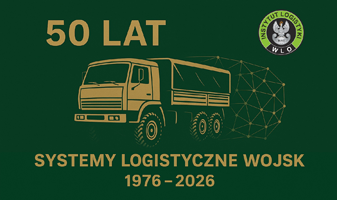ORIGINAL PAPER
Optimizing Municipal Waste Collection: a Case Study of a City in Poland
1
Department of Logistics, Warsaw University of Life Sciences, Poland
2
Faculty of Economics, Warsaw University of Life Sciences, Poland
A - Research concept and design; B - Collection and/or assembly of data; C - Data analysis and interpretation; D - Writing the article; E - Critical revision of the article; F - Final approval of article
Submission date: 2023-09-07
Final revision date: 2023-09-21
Acceptance date: 2023-09-28
Publication date: 2023-09-30
Corresponding author
Monika Roman
Department of Logistics, WARSAW UNIVERSITY OF LIFE SCIENCES – SGGW, Nowoursynowska 166, 02-972, Warsaw, Polska
Department of Logistics, WARSAW UNIVERSITY OF LIFE SCIENCES – SGGW, Nowoursynowska 166, 02-972, Warsaw, Polska
SLW 2023;58(1):197-218
KEYWORDS
TOPICS
ABSTRACT
The main problem of waste management is the increasing amount of municipal waste, and one of the key processes generating high costs is the waste collection process. The aim of the article was to optimize the route of a garbage truck using information technology (IT) software in one of the most populated Polish cities. The article tests the study hypothesis: the use of route optimization software will reduce the route length traveled by the garbage truck of the MZO in Pruszków. The data for the study was made available with the consent of the Municipal Treatment Plant in Pruszków. The received materials included information on, among others, Global Positioning System (GPS) readings of the garbage truck, including route start and end times, route length, average speed, driving time, and time of stops, points selected by the planners to collect waste along the route, information on the amount of waste collected during the implementation of the route, technical data on the moving vehicle and characteristics of the sorting plant were received. The article proposes the optimization of the routes of collection and transportation of municipal waste using the traveling salesman problem (TSP). The minimization of route length was assumed as the optimization criterion. All calculations were made in the Routimo program dedicated to route planning and optimization. As a result of the optimization, the route length was reduced by nearly 32%, and the working time by 9%. Thus, the research hypothesis stated in the article was positively verified.
We process personal data collected when visiting the website. The function of obtaining information about users and their behavior is carried out by voluntarily entered information in forms and saving cookies in end devices. Data, including cookies, are used to provide services, improve the user experience and to analyze the traffic in accordance with the Privacy policy. Data are also collected and processed by Google Analytics tool (more).
You can change cookies settings in your browser. Restricted use of cookies in the browser configuration may affect some functionalities of the website.
You can change cookies settings in your browser. Restricted use of cookies in the browser configuration may affect some functionalities of the website.


